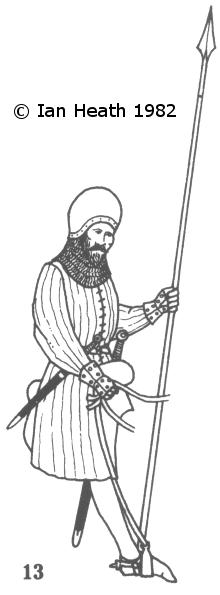
Create an Amazon Wedding Registry

ENGLISH INFANTRYMAN c.1320
An extract from Armies of the Middle Ages, Volume 1by Ian Heath


13. HOBILAR
The term hobilar first appeared in 1296, when it was applied to 260 light horsemen raised from the Anglo-Irish feudal estates for service in Scotland under Edward I. The word itself evolved from the native pony or ‘hobby’, 12-14 hands tall, that such a horseman rode, this word probably evolving in turn from the Gaelic obann, meaning quick or nimble. English, as opposed to Anglo-Irish, hobilars first appeared in 1300, closely based on their Irish counterparts but probably on the whole riding larger horses. They were basically mounted infantrymen and were the progenitors of (and in due course were steadily replaced by) the mounted archers of later armies, some of whom were even at first called hobilar-archers, such as were those assigned the duty of guarding the coast in 1364. Hobilars could be found both in magnates’ retinues and in shire levies, and were probably the same as armati.
In 1335 their equipment was laid down as horse, aketon or (coat-of-) plates (though writs of 1359 specify an haubergeon), a bascinet or palet (an unidentified type of helmet that could be of either iron or leather), gorget (either a quilted hood like that of 14 or else an aventail), iron gauntlets, sword, long knife and spear. The horse seems to have usually been valued at about 40s.